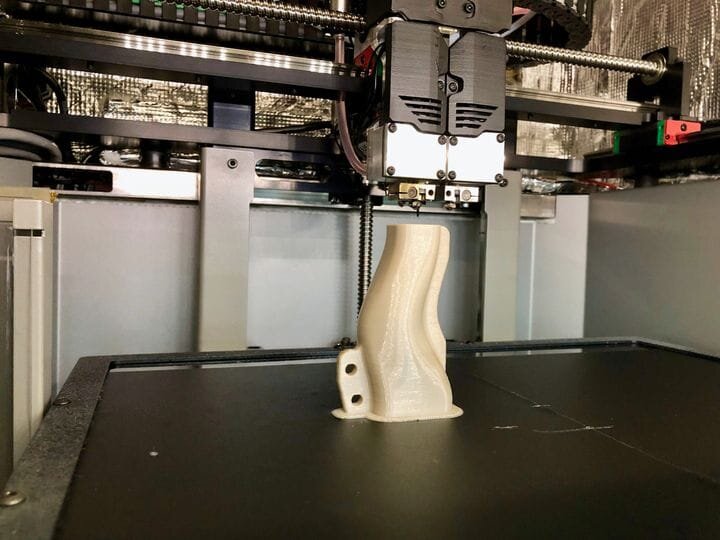![When is a 3D printer feature worth buying? [Source: Fabbaloo]](https://fabbaloo.com/wp-content/uploads/2020/05/image-asset_img_5eb08cc8b5cf3.jpg)
To those of us who watch the technology of 3D printing evolve, it’s always thrilling to see a new innovation emerge.
But the fact that an innovation can be built does not at all guarantee that it will be a success. No, there are far more considerations than merely the novelty or functionality of a feature to be considered. What is the value of a 3D printer feature?
Those doing the considering in these cases is, of course, the 3D printer purchasers. And the higher the price of the unit, the more consideration is undertaken before committing to purchase. That’s an effort to reduce risk and essentially for the company to convince itself that the product acquisition is a good idea.
What am I getting at here? It’s the realization that some advanced features appearing on 3D printers may not be financially feasible, and thus they may fall by the wayside instead of being popular innovations.
The most typical analysis is to compare purchase situations with and without the feature. For example, let’s say a device had an optional feature available to level the print surface. Should you include the feature in your purchase or not?
3D Printer Feature Cost Analysis
One way to look at this is through a cost analysis. If you have the feature, then the operator would spend less time doing operations on that device. If the feature was not present, then some manual effort would be required and that effort will consume a typical duration that can be translated into a cost.
First, some assumptions:
-
The operator is paid US$40/hour
-
In this hypothetical device, the leveling procedure takes 2 minutes per build
-
The machine performs 1.5 builds per day on average
-
The machine runs only Monday thru Friday
-
The machine is being kept for three years
Now let’s do some arithmetic:
We want to figure out how much time (and $) an operator would spend performing leveling if done manually throughout the life of the device.
This would be:
-
2 minutes X 1.5 builds X 5 days per week X 52 weeks X 3 years = 2340 minutes, or 39 hours
-
At US$40/hr, this is equivalent to US$1,560 over the three year period.
If the feature costs less than US$1,560, then it is definitely worthwhile to include in the purchase. For bed leveling, this is most likely the case, and thus we have a valuable feature.
But that’s a trivial example. There are other cases that are more difficult to analyze and sometimes come up with surprising results.
On higher priced machines, there are sometimes very unusual features only available on a particular vendor’s equipment. To exploit this “feature monopoly”, the vendor may charge a great deal for their equipment.
Evaluating 3D Printer Feature Value
In such cases it can often be the case that the manual labor equivalent of the feature is actually less than the automated feature’s cost. Thus a purchase of the equipment to acquire the feature really isn’t financially sound, even though a non-technical alternative solution is selected.
There are some twists to this analysis. For smaller equipment, the costs of features tend to be quite small and very often are highly beneficial, as was the case with our trivial leveling example above.
On the other hand, for hobbyists using the equipment the cost of labor is essentially zero, making it hard to beat. In some corporate scenarios the cost of labor can sometimes effectively be zero because if there is no intent to reuse or release that labor, the company is still paying for it with or without the automation feature.
Analyzing 3D Printer Features
These are the types of analysis that 3D printer manufacturers should and often do when proposing to add new features into their equipment. In many cases this is in fact the reason you don’t see what might be obvious features in a product: no one believes it’s worthwhile to purchase them.
When I’m looking at a 3D printer purchase, particularly one with optional features, I always perform an analysis of this type to ensure I know I’m getting the maximum value from the transaction.
Maybe you do the same?

